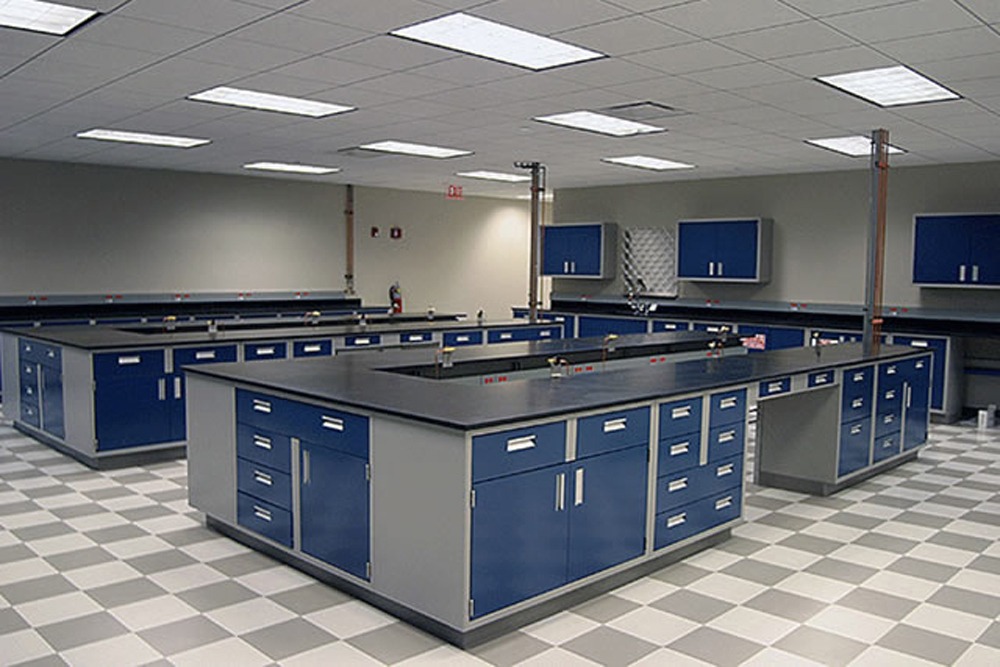Choosing the right laboratory furniture is crucial for creating a functional and safe working environment. Metal laboratory furniture offers durability, resistance to chemicals, and ease of maintenance, making it a popular choice. Whether you are setting up a new laboratory or renovating an existing one, it is essential to consider several factors before investing in metal laboratory furniture. This article will explore key considerations when buying metal laboratory furniture, with a focus on the integration of laboratory fume hoods and the importance of selecting a reputable lab furniture manufacturer.
- Functional Design and Layout
Before purchasing metal laboratory furniture, carefully assess your laboratory’s needs and workflow requirements. Consider the following:
a. Workspace Efficiency: Determine the type and number of workstations required for your laboratory activities. Consider the size and arrangement of the furniture to optimize workspace efficiency, allowing for smooth workflow and easy access to equipment and materials.
b. Customization Options: Look for metal laboratory furniture manufacturers that offer customization options. This allows you to tailor the furniture to your specific requirements, such as incorporating integrated sinks, electrical outlets, or storage solutions, ensuring a seamless fit for your laboratory operations.
c. Ergonomics: Prioritize ergonomic design to ensure the comfort and well-being of laboratory personnel. Adjustable height workbenches and chairs, as well as proper positioning of equipment and storage, can reduce the risk of injuries and enhance productivity.
- Durability and Chemical Resistance
Metal laboratory furniture is known for its durability and chemical resistance. When purchasing, consider the following aspects:
a. Material Quality: Choose furniture made from high-quality metals such as stainless steel or powder-coated steel. These materials provide excellent resistance to corrosion, chemicals, and wear and tear, ensuring longevity and maintaining a hygienic laboratory environment.
b. Chemical Compatibility: Evaluate the compatibility of the metal furniture with the chemicals and substances used in your laboratory. Ensure that the chosen materials can withstand exposure to acids, solvents, and other potentially corrosive agents commonly used in your research or experiments.
c. Surface Finish: Look for furniture with smooth and non-porous surfaces. This facilitates easy cleaning and minimizes the risk of contamination or chemical buildup. A durable, high-quality finish enhances resistance to stains, scratches, and chemical damage.
- Integration with Laboratory Fume Hoods
The integration of metal laboratory furniture with laboratory fume hoods is crucial for ensuring proper airflow and safety. Consider the following:
a. Placement and Compatibility: When designing the layout of your laboratory, plan for the proper placement of laboratory fume hoods in relation to the metal furniture. Ensure that the furniture does not obstruct the airflow patterns of the fume hoods, allowing for efficient containment and removal of hazardous fumes.
b. Fume Hood Ventilation: Collaborate with the fume hood manufacturer and the lab furniture manufacturer to ensure seamless integration of the fume hood ventilation system with the furniture. This may involve coordinating the placement of electrical outlets, ductwork, and connections for exhaust systems to maintain proper functionality and safety.
- Reputable Lab Furniture Manufacturer
Selecting a reputable lab furniture manufacturer is essential to ensure the quality, functionality, and safety of your metal laboratory furniture. Consider the following:
a. Experience and Expertise: Choose a manufacturer with extensive experience in producing laboratory furniture. Look for manufacturers with a proven track record in the industry, as they are more likely to understand the unique requirements of laboratory environments.
b. Compliance with Standards: Ensure that the manufacturer complies with relevant industry standards and regulations, such as safety guidelines for laboratory furniture. This demonstrates their commitment to producing high-quality, reliable products that meet safety requirements.
c. Customization and Support: Opt for a manufacturer that offers customization options and provides comprehensive support services. This includes assistance with design, installation, and maintenance, as well as prompt customer support for any inquiries or issues that may arise.
Conclusion
When purchasing metal laboratory furniture, careful consideration of functional design, durability, integration with laboratory fume hoods, and the reputation of the lab furniture manufacturer is essential. By selecting the right furniture and ensuring its compatibility with your laboratory’s requirements, you can create a productive and safe working environment that promotes efficiency, longevity, and the well-being of laboratory personnel.
